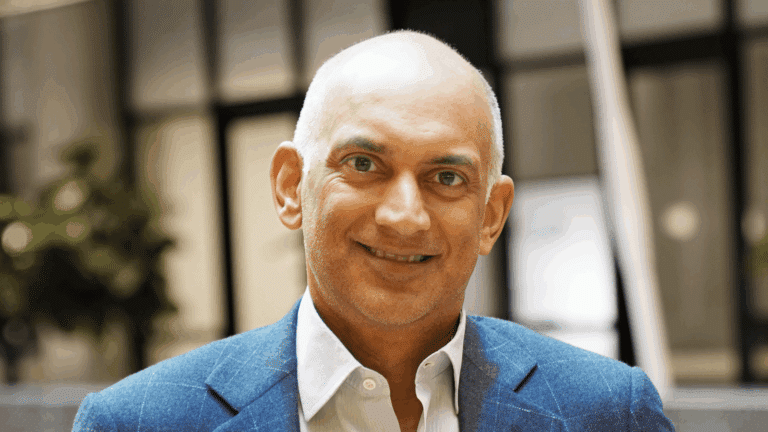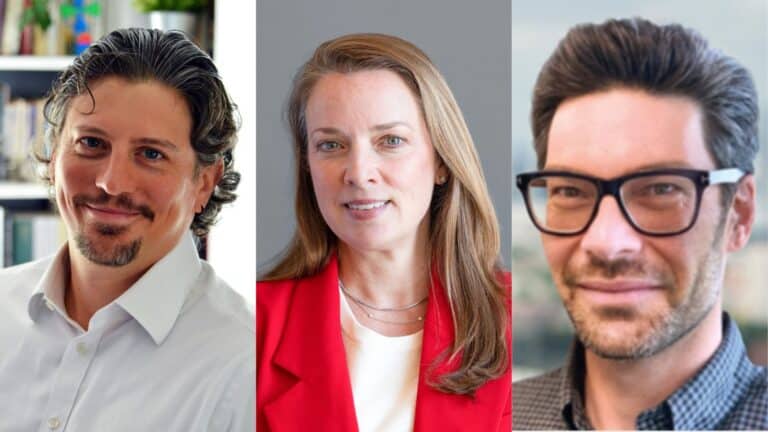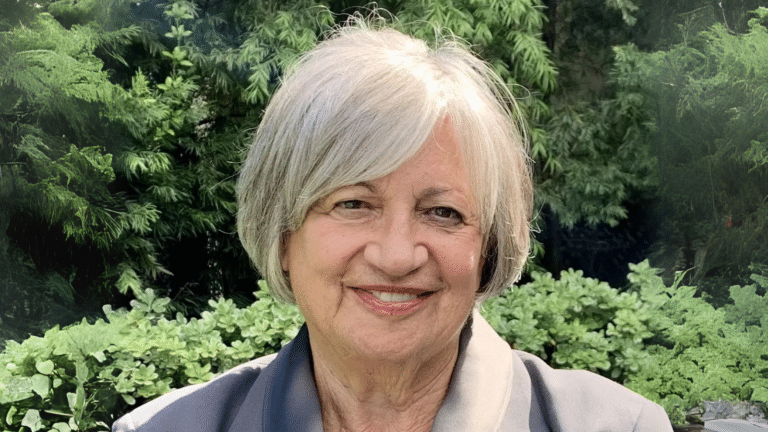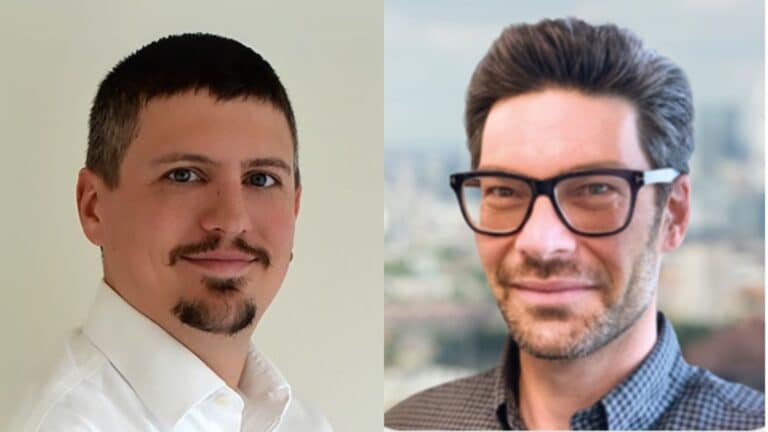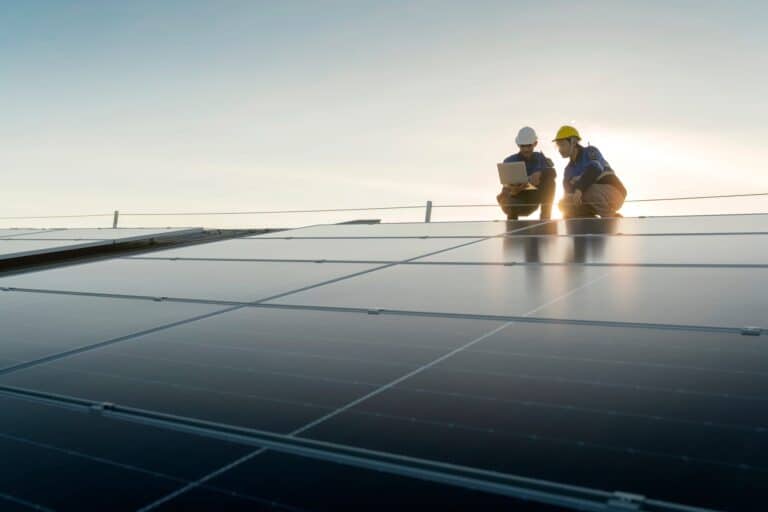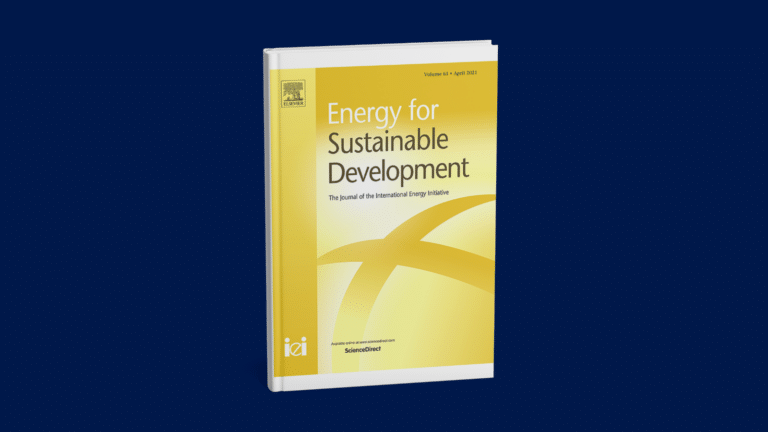Eric Toone: I think this is going to be the most important development in energy in our lifetimes and perhaps in our children’s lifetime as well.
Jason Bordoff: Energy is central to economic development and access to energy inextricably linked to prosperity. As standards of living improve energy use could double by the end of the century with the majority of this growth occurring in the developing world. Meeting this demand with zero-carbon affordable energy is a Herculean task. Powering economic growth with zero and low-carbon energy sources will require both the development of new technologies and the rapid deployment of existing ones. But reinventing the global energy mix continues to be extremely challenging and there are open questions regarding the affordability and feasibility of new technologies. Why is energy so important for development? Where are the opportunities for innovation in the energy transition? What will it look like to electrify everything and what are the pathways for existing technologies like nuclear? And what role will these play in a net-zero world?
This is Columbia Energy Exchange, a weekly podcast from the Center on Global Energy Policy at Columbia University. I’m Jason Bordoff. Today on the show, Eric Toone. Eric is the technical lead on the investment committee at Breakthrough Energy Ventures. Before joining Breakthrough in 2017, he was the vice provost and director of the Duke University Innovation and Entrepreneurship Initiative and a professor of chemistry and biochemistry. From 2009 to 2012, he was detailed to ARPA-E, the US Department of Energy’s Advanced Research Projects Agency, where he served as program director and deputy director for technology. Eric joined me in London last month at Breakthrough’s Energy Summit to talk about his work. We discussed the challenge of increasing energy access in the developing world while rapidly cutting emissions and the difficult trade-offs this will require. We also talked about a wide range of technologies that will prove to play a part in the energy transition, including nuclear fission, fusion, geothermal and green hydrogen. I hope you enjoy our conversation.
Eric Toone, thanks for making time to join us on Columbia Energy Exchange here in London. Great to see you again.
Eric Toone: It’s great to be here. Thanks.
Jason Bordoff: And let’s tell everyone where we are. We’re at the Breakthrough Energy Summit. What is that? Why are we all here? And tell a little bit. I think people probably know about Breakthrough Energy and what Bill Gates has done with his investment in philanthropy, but just help people understand the organization, what the summit’s about and the role you play in it.
Eric Toone: Sure. Breakthrough Energy was created in 2015 at the COP in Paris and there, Bill announced the formation of the Breakthrough Energy Coalition, a group of 35 of the world’s wealthiest and most influential individuals that was designed to be a private sector counterpart to the public sector Mission Innovation. Today, Breakthrough Energy consists of a number of groups. We have Breakthrough Energy Ventures as the flagship organization that is now about 120 companies, $4 billion under management. We also have a fellows program that looks at very early-stage technology. We have a catalyst program that looks at late-stage, first-of-the-kind deployment, and then we have a large public affairs group and things like that. So it’s quite a large organization at this point. The Breakthrough Energy Summit happens on the order of once every 18 months or two years and brings the larger community together to look at technologies, to have a conversation about how we support these technologies and move them towards practical implementation and deployment and it’s just a great time to be together.
Jason Bordoff: Well, I think last year was Seattle. That was a great event and one of the highlights of it was your keynote, which I always look forward to. And your keynote this year really spoke to me because it’s something I think a lot about and have tried to communicate. You did it very effectively, so that’s what I’d like to focus the conversation on. And what I heard you talk about was the importance of energy to human well-being and prosperity and the scale and magnitude of this transition that we’re trying to undertake and why it is so difficult when we think about how cheap renewables are and there are a lot of solutions out there and innovation is happening. Why is this so hard? So just step back. You had a few rules in the speech that everyone has to accept. One of them was energy is prosperity. What does that mean?
Eric Toone: Energy is really the capacity to do things. Energy is how we make things. Energy is how we move things. Energy warms our homes, energy prepares our food. The things that we do all require energy. To do any work, of course, physics tells you you need energy. And so it turns out that there’s an incredibly powerful correlation between per capita energy use and per capita GDP. And in my talk I went through that and showed how strong that correlation is across time. If you look at the United States from a period of about 1830 to the present day, how strong the correlation is between per capita energy use and per capita GDP. And then at the very end I showed another plot that showed a linear correlation across all 200 countries in the world. And if you plot per capita energy use against per capita GDP and you saw that that was a log log plot against three orders of magnitude in each dimension, it’s an incredibly straight line. It’s extraordinary how powerful a relationship between per capita energy use and per capita GDP is. Energy really is prosperity. It is the capacity to do work. It’s what we need to create wealth and to create prosperity and that’s why energy is so important.
Of course we achieved the prosperity that we have today, which is unlike any other prosperity the planet has ever seen. It’s extraordinary the level of prosperity we’ve been able to develop in the OECD world over the last 150 years. But we did that by accessing a legacy store of fossil energy and that of course was a Faustian bargain that brought with it emissions that we now have to address. So I make the case that the most important challenge of our time is how to sustainably provide energy and the prosperity that comes with it to the entire planet.
Jason Bordoff: I was reminded of a quote that struck me when I was listening to your speech. A book you may have read, the Wizard and the Prophet by Charles Mann, which was a great book and he had this quote in there. “The impact of fossil fuels exhausts hyperbole. Energy has any number of sources, solar, wind, hydroelectric, geothermal, but for all the modern era, the overwhelming majority has been derived from fossil fuels, coal, oil, natural gas, and it was fossil fuels that transformed daily existence. Take any variable of human well-being, longevity, nutrition, income, mortality, overall population, and draw a graph of its value over time. In almost every case it skitters along at a low level for thousands of years, then rises abruptly in the 18th and 19th century as humans learn to wield the trapped solar power in coal, oil and natural gas.” It sounds like you’re agreeing with that.
Eric Toone: 100%. It’s so true. Across every dimension of human well-being, we see that powerful correlation.
Jason Bordoff: And it of course comes with a cost in pollution, although we’ve done some good work to clean that up and of course carbon emissions. So now we just need to do the same thing, provide that energy for prosperity with zero carbon sources of energy. They’re falling in cost dramatically. Solar, wind, battery storage. So why is this so hard?
Eric Toone: So I made the case that the most powerful lever that we have to decarbonize is to electrify everything. To electrify sectors that are currently powered by thermal processes with fossil fuels. So electrify transportation, electrify buildings, electrify manufacturing. If we do those things, we require certainty. If we’re going to rely on electricity to do these things, then our electricity has to be reliable. We know wind and solar are intermittent sources of energy. You get energy when the wind blows and when the sun shines. And even things like hydro made the case, hydro is really just solar energy with some built-in storage. Those intermittencies happen over timeframes that range from seconds to decades and we have seen over and over again that when people rely on intermittent sources of energy, even with some storage that allows you to get through relatively short term intermittences you eventually run onto a longer-term intermittency.
One of the examples I gave was drought in Brazil. 63% of Brazil’s electricity comes from high hydroelectric. They’re in the middle of a long-term, decade-long drought. Hydro output is down by 70%, and so they make up the shortfall by burning coal. We saw that in Germany with a drop in the output of wind in 2020, 2021. So we see that over and over and over again that if you rely on intermittent sources, even if you have storage that lets you deal with a couple of days or a few weeks, you eventually run into intermittencies that you’re not prepared for. And we see over and over again that when people run on those intermittencies, they make up the shortfall by burning fossil fuels and burning fossil fuels is accompanied not only by emissions but by significant increases in the cost of electricity.
Jason Bordoff: I want to come back to some of those specific technologies and challenges with intermittency and some other technologies that don’t suffer the challenges of intermittency but have other challenges. Just finishing on the point about energy being prosperity and the graph you described and showed the energy intensity of GDP continues to fall. We get more efficient at producing unit of GDP with a certain amount of energy. But you’re saying there’s an unbreakable relationship between the two. You can’t get growth in GDP, you can’t get prosperity without using more energy, even if we’re getting more efficient all the time about how we produce economic growth. Is that right?
Eric Toone: It’s a really great point. So here I think it’s important to separate the OECD world from the developing world. When you get the relatively affluent and advanced nations, we can absolutely introduce efficiencies that allow you to reduce the amount of energy per dollar of GDP. And if you look at Western Europe and America, that’s exactly what you see. You see a slow and steady decline in energy use per dollar of GDP. And I think that that trend will continue and I think that if that’s all we were talking about, the planet would probably be okay. But where this really blows up is when the 70% of the non-OECD world seeks OECD quality of life.
Remember that 10% of the planet has no access to electricity at all. Another 10% has only intermittent access. So when large sectors of the planet that have no access or very limited access to electricity seek the energy that they need to achieve even minimal levels of prosperity, that’s where this whole thing really breaks up. So that is really my big concern. Can efficiencies that have been developed in the western world be introduced to the emerging world so that it doesn’t take them quite as much energy per dollar of GDP as it took us? Absolutely they can and they should, but it’s still going to be an enormous in the amount of energy. By most estimates, energy use globally will double by the end of the century.
Jason Bordoff: One view I hear about that often is the idea that there are a lot of low-income people in the world, billions of them who have no energy access at all or very low levels of energy. Of course, adjust transition means people in emerging and developing economies need to improve their well-being. And the idea that you can’t do that with clean energy alone, I think the reaction from some is, well, that’s like a message we hear from the fossil fuel industry a lot and it’s like a false choice. Of course, we can deliver economic prosperity to low-income people and we have the tools to do this in zero-carbon ways. Is there a more significant real tension there than sometimes I hear people willing to acknowledge?
Eric Toone: Yeah. I think there is. And now we get to the concept of a green premium or how much does it cost to produce clean electricity versus business as usual. And as I said, the baseline for how we produce baseload and dispatchable electricity today is coal and natural gas. Coal is about a hundred dollars a megawatt hour or so that’s what I use as the baseline. My point is if we go to people in the emerging world and say, “Well, here’s a way to produce electricity that generates no carbon, but it costs $200 a megawatt an hour,” what are they going to do? They’re not going to use it. They’re going to burn coal and natural gas in exactly the same way that we did. And we have no moral high ground to stand on to tell them that they should do something different because we achieved this level of prosperity by burning coal and natural gas. And even if we did have a moral high ground to stand on, they won’t listen to us.
Prosperity is an immediate need. This is something that happens tomorrow. I need a house. I’m living in the elements. I need a roof over my head, I need food, I have immediate needs. The consequences of carbon pollution are much longer term. And so people massively discount the value of future events, and so if people are going to produce energy and by extension prosperity by the lowest cost means available to them. Senegal for instance, just discovered an enormous resource of natural gas off its coast. Senegal is going to use that. How do we stop them from using that? So really I think the only way we can stop them from using that is to work to develop carbon free technologies that have a zero green premium or even ideally a negative green premium. And so we can go to them and say, “Look, here’s an even better idea. Nevermind the carbon. Here’s the cheapest way there is to achieve prosperity.” That’s really what we have to do.
Jason Bordoff: And that comes back to your point about intermittency because people would say, “Well, $100 a megawatt hour. We have really cheap renewables now.” And yes, they’re intermittency challenges, but storage technology is coming along. We’ll figure that out. So of course there are cheaper ways to produce energy and deliver that level of prosperity and growth to low income parts of the world than just developing in the fossil fuel intensive way we have in the past. Talk about the trade-offs and the difficulty and the tensions between those things and how difficult it is to really at the scale and magnitude of the numbers we’re talking about for the level of GDP growth you’re talking about in these parts of the world. How should we understand how difficult it is to do that with zero carbon energy alone today?
Eric Toone: Well, today with zero carbon energy alone, it’s very difficult. It’s a hundred percent true that you can produce very, very cheap … Intermittent wind and solar are really good ways of making really, really cheap electricity. What they are not good for is making reliable electricity. There are intermittencies that happen over time, domains that range from seconds to decades and those intermittencies inevitably mean unless you very significantly overbuild, which obviously increases your costs very significantly are going to lead to shortfalls. And those shortfalls mean that you can’t operate a grid, you can’t distribute your electricity. So it’s not just a question of one day I’ll flip the light switch and no lights will come on, but the grid can’t operate. We have no mechanism for distributing the energy. Again, if we’re going to rely on electricity, our electricity has to be reliable. To build a grid as we understand it, to distribute electricity in the way that we understand that we cannot have those intermittencies. Wind and solar can be some part of it at the periphery, but they can’t be the core of it. The core of it has to be dispatchable, baseload electricity
Jason Bordoff: And talk about where energy storage technologies are now, which could cope with that intermittency to allow renewables to be more like baseload.
Eric Toone: Sure. We have lots of different storage technologies. There is an inverse relationship between the duration of the storage you’re trying to achieve and what you can afford to pay for that storage. So that means that very short periods of time I can afford to spend a lot. As I go to longer and longer time domains, I can afford to spend less and less. And one simple way to think about that is it’s just a question of how many cycles you get to amortize the cost of that storage over. If I use that storage 10 times a day to do frequency regulation for instance, well, I can afford to do it a lot because each use of that storage costs me very little. If I’m trying to deal with the fact that solar insulation in Northern Europe is five times in the summer, what it is in the winter, I get to use that storage asset once a year. By the time I get to about eight hours, 10 hours, somewhere in around there. Things like lithium ion batteries get to be too expensive for storage. By the time I’m out to a couple of weeks, then even things like iron error is too expensive.
And so by the time I get to issues, as I mentioned that you see wind energy down by more than 50% on time domains of 30 years in the North Sea. Storage for that has to be incredibly cheap. So people talk about making massive underground caverns and filling them with hydrogen and things like that. I suppose it’s possible to do something like that, but I think we could also find other ways of producing zero carbon power.
Jason Bordoff: Yeah. You’re familiar, I’m sure with all the studies showing what a net-zero electricity system looks like and they often show renewables that 70, 80, 90% and there’s a sense that we need other technologies to deal with a little bit of the rest, but renewables are going to get us almost all the way there. It sounds like you’re saying you’re a little more skeptical and think technologies that don’t suffer from intermittency are going to need to play a much bigger role in percentage of total electricity produced.
Eric Toone: I do. And it’s because these intermittencies that occur at very, very, very long time domains. We’re not talking about intermittencies that have time domains of hours or days or weeks. We’re talking about intermittencies that have time domains of years or decades, and making that up with storage is going to be a very, very, very difficult thing to do. We’ve seen people try to do it over and over again, and when they do, they inevitably run into shortfalls. When they run into those shortfalls, they inevitably burn fossil fuels to make up for the shortfall and they end up with very expensive electricity.
Jason Bordoff: So tell us where the more baseload, zero-carbon electrons and molecules are going to come from. Bill Gates who founded Breakthrough has been talking quite a bit about nuclear lately. Where do you see the outlook now for nuclear technology? Let’s start with fission. How big a role is that going to play in the clean energy mix and how different does that look in different parts of the world?
Eric Toone: So today, nuclear energy provides about 10% of electricity globally. That number has been constant or even falling slightly since 1979. Since the time of Three Mile Island. After the Three Mile Island accident, the cost of nuclear energy rose by roughly five-fold. And that had to do with dealing with-
Jason Bordoff: That was in the US or globally?
Eric Toone: Well, that’s really globally, certainly in the US but globally as well. And that was us dealing with the challenges of nuclear fission, which broadly our waste, the byproducts of nuclear fission are radioactive for millennia and so have to be stored for thousands of years. The byproducts of nuclear fission are fissile and can be weaponized, and so we have to protect from that. And nuclear fission is inherently a chain reaction, which means it’s susceptible to runaway reactions. Now today, people have developed new reactor designs that try to deal with those challenges. New form factors for fuel, small modular reactors, things like that.
We need to try those technologies out and understand what the real cost entitlement is. There are globally about 60 reactors currently under construction and another a hundred in some stage of planning, but most of those are old, traditional large reactors. And so we don’t really understand what the ultimate cost entitlement of new forms of nuclear is. The other issue is we’ve lost the muscle memory. We don’t know how to build reactors anymore. We’ve just stopped doing it since the early 1980s. And so we need to get back to developing that expertise and understand what the real cost entitlement of nuclear fission is. But I think nuclear fission is absolutely going to have to play some very significant role in the production of zero carbon power.
Jason Bordoff: And the pushback is, as you said, it’s just too expensive and you’re saying that need not be the case with improvements in technology and just starting to do this at scale a little bit more.
Eric Toone: I think we have to find out what exactly the cost entitlement is.
Jason Bordoff: You and I were talking a little bit before we got started about nuclear … And this probably relates to other issues as well across the board. When we talk about climate change, and you do in your talk, you talk about the benefits of fossil fuels, but you remind people in a pretty powerful way about the impacts that is having the environmental impact, how warm surface ocean temperatures are and on and on down the list, why it is urgent that we deal with the climate crisis and bring emissions down. We use words like existential to talk about it, but when we think about trade-offs, when we think about risk, say with nuclear energy … And that’s a prominent one, and where there’s risk. We’re not thinking about risk in the right way given the consequence of not reducing emissions fast enough. Talk more about that.
Eric Toone: I think you can never think about risk outside of a context. You can’t say this is a risky technology, so we shouldn’t do it. The question always is what’s the risk of this technology versus the alternative? We know the risks associated with continuing to burn fossil fuels. We know those risks very well. They’re longer term to be sure, but we know those risks to a very high degree of certainty. So the question is, if I take a technology like nuclear and accept that it has these challenges, are those safety issues greater than or less than the safety issues associated with fossil fuels? I think if you go back to Three Mile Island, that was really the trigger that started this focus on safety that led to the enormous increase in cost. How many people died at Three Mile Island? Nobody died at Three Mile Island.
So I think that an honest assessment of the relative risks … I get that nuclear energy is very scary and the China syndrome was out at an unfortunate moment in time and people conjure these incredible possibilities, but the fact of the matter is there’s been more people died in coal mining accidents than have died from nuclear accidents. The risks are real and you don’t want to minimize them, you don’t want to downplay them, you don’t want to hide from them, but you have to make sure that you ask the right question. And the right question is, are those safety risks greater or less than the safety risks of the alternative technology? And the alternative technology is burning gas and coal.
Jason Bordoff:
And the risks of safety, risks of proliferation, there are cost issues. Talk about the different pathways for, so-called advanced nuclear technology and which ones you’re excited about, which are more promising, and what do you see in the potential for cost declines?
Eric Toone: Well, those are very difficult questions. Small-module reactors have the potential to be built. Things like NuScale, things like TerrPower, those are reactors that have the potential to be built effectively in a factory. And so the analogy is you build airplanes and not the airport. We haven’t started doing that yet. We haven’t started deploying these technologies. We haven’t started building them out, so we don’t know what the cost entitlement is. And my point is just that we’re not going to know what the cost entitlement is until we try to build them out. And so we can’t say that nuclear is too expensive if we have new technologies and won’t try them, won’t try building them, and so I think we just have to go ahead and do some of these things.
Jason Bordoff: Yeah. There was an interesting big read in the Financial Times about how Russia’s building a huge number of the world’s nuclear power plants now, and those are there for 60 years and they are doing it for reasons of geostrategic influence and some of the geopolitical issues we think about every day. I’ve been in Brussels talking with European commission officials. It does seem like people are rethinking a little bit some of the opposition to nuclear, given some of the realities you’re talking about. I don’t know if you see that in conversations with policy officials in Europe or elsewhere.
Eric Toone: Absolutely. I think people in large measure accept that nuclear is going to have to be a part of the future. Absolutely.
Jason Bordoff: Fusion 20, 30 years away and always will be. Is that still where it is today? And help people understand what we’re talking about and we talk about fusion technology and how they should understand if this is just a pipe dream or if it really has the potential to play a meaningful role in meeting the climate challenge.
Eric Toone: So nuclear fusion, the idea is that we take two light nuclei and jam them together to form a new heavy nucleus where the heavy nucleus has a mass. It’s a little bit less than the combined mass of the two light nuclei that you started with, and that mass is converted to energy and that’s the basis of fusion power. The challenge you have with fusion is to get those two nuclei together. Atoms have enormous repulsive forces, and so it’s hard to jam those two nuclei together. Broadly there are two approaches to doing that. The first is that you create a plasma, you get the temperatures hot enough that you strip the electrons away from the nuclei and you make a plasma of electrons in nuclei, and now two nuclei lacking the electrons that provide that repulsive force have the opportunity to fuse. The challenge that you have there is that those plasmas are formed at temperatures that exceed the temperature of the surface of the sun, and so you have to get to on the order of a hundred million degrees. Those temperatures can’t be contained in a physical vessel, and so we have to contain them in a magnetic field.
There are a variety of approaches there. The tokamak, the familiar donut-shaped magnetic field is by far the most common. There have by now been over 200 tokamaks built and operated. There have been an extraordinary number of these things built, and many of them have operated at very close to breakeven energy. That is, they could have produced more energy than it required to maintain that field really if we just added more fuel. So the idea that we can’t get to net positive energy production, we’ve been very close and we absolutely can get there. Really the biggest change that’s happened in the whole magnetic containment fusion space in the last little while has been the development of high-temper, superconducting magnetic materials, and that allows you to massively shrink these things. So you don’t need something the size of ITER, the giant science project that’s being constructed in Europe, but rather you can build something that’s on the order of an even smaller than a traditional nuclear reactor.
There are multiple companies that are working on approaches to magnetic confinement fusion, and they have said publicly that they think that they will be putting electrons on the grid in the 2030s in the early 2030s. So I do think that it’s a little bit unfair to say that fusion’s 30 years away, and it always will be. There have been important fundamental advances. There are people that are building reactors today that’ll be net positive energy producing in the next couple of years, and there is a very real chance that they will be putting electrons on the grid. In the early 2030s.
Jason Bordoff: How big a role do you think geothermal will play? Is this small and marginal and maybe in some locations where they have good geothermal resources or can this really play a much bigger role in global low-carbon energy system?
Eric Toone: I think that geothermal is a massively underutilized resource. Historically, to have geothermal, you needed three things. You needed heat, you needed water, you needed permeability, and that limited you to a very small number of places on earth. The geysers in California, Iceland a few places like that. Modern geothermal is capable of taking drilling practices from the oil and gas industry to induce permeability and then introduce water in either open or closed loop format. So now all you need is heat and you can introduce porosity, you can introduce water, and that massively expands the range of where you can put geothermal. Already in the United States, pretty much everywhere west of the Mississippi is amenable to geothermal. I think that there are still big opportunities yet. The opportunities now are more going to high temperature geothermal, and those will require new technology development. New technology development in drilling and drilling tools, new technology development in building and operating reservoirs. So definitely new technology that needs to be developed, but absolutely technology that can and will be developed. So I think geothermal is a massively underutilized resource, and it will play a larger role in this whole picture.
Jason Bordoff: Globally.
Eric Toone: Globally, yeah.
Jason Bordoff: The electrons we’ve been talking about, obviously we need molecules as well and fuels, and again, Europe, which has very ambitious goals for green hydrogen, for example, something like 20 million tons by 2030 and almost nowhere today. There’s something like a 10th of a ton globally of green hydrogen being produced. How big a role do you think green hydrogen will play? And then what are the other ways we might have hydrogen in the energy mix?
Eric Toone: Hydrogen is a very, very, very interesting material. Hydrogen is pure reactive chemical energy. If you have enough hydrogen and it’s cheap enough, you can do anything. If you have enough hydrogen and it’s cheap enough, you can make fuels, you can make materials, you can make steel, obviously you can make things like ammonia fertilizer or whatnot. So I describe hydrogen as a Swiss army knife of energy. But the trick is it going to be cheap enough and will you have enough of it? And really as you come down the cost scale, at each level on the cost scale, it opens up a new set of things that you can do that become cost competitive at that price. So really the question is at what cost can you get hydrogen? Electrolytic hydrogen, green hydrogen traditionally has been used for specialty applications. It’s a very, very, very small fraction, less than 5% of all hydrogen. It’s used in specialty applications. Applications where people are largely cost insensitive. And part of the reason for that is it takes about 50 kilowatt-hours to make a kilogram of hydrogen. So if you’re paying 10 cents-
Jason Bordoff: Put that in perspective. How big a number is that?
Eric Toone: Well, that’s a big number. If you’re paying 10 cents a kilowatt-hour for electricity, then you’re $5 a kilogram just in electricity costs before you put in the CapEx for your electrolyzer and the op-ex for the whole thing. Because electrolytic hydrogen has mostly been focused on specialty applications, people were relatively cost-insensitive. They didn’t care if they paid 10 or $15 a kilogram for their hydrogen. And so there was never really a motivation to beat the CapEx out of electrolyzers and see how cheap you could really make these things. Well, what’s happened now, of course, is there is very large amounts of intermittent very cheap electricity. Intermittent, not grid-connected solar energy can be had for one and a half cent a kilowatt-hour, a penny, a kilowatt-hour. So now you’re down to 50, 60, 70 cents a kilogram for electricity costs. Well, now the long pole in the tent is electrolyzer CapEx.
And so now there are people working on driving down the CapEx and electrolyzers .and I think that people see a real path to two, two and a half dollars a kilogram hydrogen from Electrolyzers. That will certainly open up more applications for that hydrogen than we have today. Could you make things like liquid fuels that would be cost-competitive at those prices? Probably not. One of the most exciting things that has happened recently, however, has been the realization that there is an enormous store of hydrogen in the earth that can be drilled out of the earth in the same way that oil and natural gas were. And of course, we have known that hydrogen comes out of the earth for a very long time. This is something that we’ve known for hundreds of years. There are examples where this has been going on for thousands of years in places as I mentioned, like Mount Olympus in southwest Turkey.
But this really got started in Mali, in northwest Africa. There in 1983, villagers were drilling a well for water. They went down a little over a hundred meters, the well exploded. They assumed that they drilled into natural gas, and so they plugged the well. People went back in 2014 to open that well and extract the natural gas and very quickly discovered that it wasn’t natural gas at all, but in fact, it was hydrogen. Effectively a hundred percent hydrogen. Since that time, about 25 other wells have been drilled in the region and many produce hydrogen. So they’re using that hydrogen to produce electricity today. That really kicked off a big push to understand exactly how large that resource was globally and how it could be accessed. The origin of that energy, the origin of that hydrogen is thought to be primarily the reaction of iron II with water. And if that’s the case, then you’re really limited only by the amount of Iron II there is in the Earth’s crust, which is effectively infinite. So Jeff Ellis and the people at the United States Geologic Survey have estimated that the recoverable resource maybe as large as a trillion tons, and that would be enough to power all of humanity for thousands of years.
Jason Bordoff: So if we see hydrogen at scale, we talk often about how we’re going to make it. Is it going to be with blue hydrogen with carbon capture? Is it going to be electrolyzers and green? You think natural hydrogen, geologic hydrogen, is it going to play a very big role?
Eric Toone: I do. I think that this hydrogen has a cost entitlement at or below a dollar a kilogram at the wellhead. It’s obviously going to cost something to move it, but it has a cost entitlement of at or below a dollar a kilogram at the wellhead. And that enables an extraordinary set of opportunities. And so I tell people … I mentioned in my talk, I think this is going to be the most important development in energy in our lifetimes and perhaps in our children’s lifetime as well.
Jason Bordoff: And of course, one of the challenges with green hydrogen, as you said, is how much electricity it takes. We’re already growing electricity use to electrify things because as you said, energy is prosperity and a lot of people around the world need to get a lot wealthier. One of the new factors everyone’s trying to understand is AI and data centers and how much that’s really going to increase electricity use. How should we think about that?
Eric Toone: I would separate those two things. So AI is obviously a rapidly emerging field. My sense is that AI is going to change absolutely everything about absolutely everything. And I think that the consequences, the implications, the repercussions of AI are going to be enormous. What we’re doing at the moment is trying to get smart and understand how we’re going to be able to use AI and how AI is going to change things that we’re interested in. How we operate the grid, for instance is absolutely an example where there could be a powerful role for AI. Data centers is a slightly different topic.
There is massive growth in energy use from data centers in the United States. There I would say a couple of things. First of all, those data centers can be cited almost anywhere. So you can cite them in places where there’s very large quantities of very cheap intermittent solar energy. There’s no reason that you can’t put these things in Morocco and places like that that have tremendous solar resources. So there are ways that you can cite these things to minimize the impact of those centers on existing generation resources. The other issue is I don’t know how hard we have ever worked at minimizing the amount of energy that’s actually required to do these calculations. So when you think, what does an individual data flop actually … What’s the theoretical minimum energy? And I don’t think we’ve ever worked to figure that out. And in fact, if you look at how much heat data centers generate at some level, that tells you that’s how much energy is being wasted. We’re turning electricity into heat. So I think there’s probably enormous headroom to make those data centers to make calculation massively more efficient, and I think that they can be cited where there is zero carbon low cost resource.
Jason Bordoff: Can you talk about how we’re going to decarbonize transportation globally given energy as prosperity, the huge numbers, the billions of people who have nothing today who are moving from two and three wheel vehicles to four wheel vehicles? The scale and magnitude of this transition, when billions of more people taking to the roads, what does it look like for that? Is that going to be electric? Do we have the critical minerals? Do we have the capacity to produce enough batteries to electrify transport? Is that just going to be cars? What’s going to happen in trucks and heavy duty and aviation?
Eric Toone: So transportation right now is about eight gigatons of emissions, about six gigatons of that is light duty cars and trucks, and the rest is heavy duty transportation, long haul trucking, shipping, and especially aviation. So let’s separate those into two buckets. If we look at just light duty transportation, there’s a legacy fleet of about a billion vehicles on the road today. And that number grows by on the order of 80 million vehicles a year. Electric vehicles are still a relatively small fraction of total global sales. And so gasoline powered cars are going to be with us for a very long time. And remember, cars today are very different than the cars that you and I grew up with. When you and I were growing up, if you got a hundred thousand miles out of a car, you were doing incredibly well. Cars now go 250, 300, 400,000 miles, and when you go trade your Honda Accord in to buy a Tesla, that Honda Accord gets put on a boat and shipped to Africa where it keeps going. So I tell people that there will be more gasoline powered cars and trucks on the road in 2050 than there are today.
If you imagine that there’s about a billion cars and light duty trucks on the road today, we add that at about 80 million a year, by the time you get to 2050, there’s going to be three billion cars and trucks on the road. It’s hard to see how more than a billion of those are not gasoline powered. So that tells you that we’re going to need liquid fuels for a very long time. And now if-
Jason Bordoff: It also doesn’t make you optimistic about the ability to decarbonize by mid-century.
Eric Toone: Well, you’re going to have to decarbonize those fuels. You’re going to have to decarbonize those fuels. And if you look at the sectors of transportation that are difficult to decarbonize by electrification and especially things like aviation, that is a modality that is growing very rapidly, and those are modalities that absolutely require the extraordinary energy density of liquid fuels.
The really good batteries today are maybe 300, 400 watt hours per kilogram. Gasoline is 13,000 watt hours per kilogram. People forget just how energy-dense liquid fuels are. When you’re sitting on the tarmac on your wide-body plane getting ready to fly to Europe, and you see that hose plugged into the bottom of the wing fueling the jet that’s pumping at 600 gallons per minute. The power flowing through that hose is 1.6 gigawatts. Two AP 1000 reactors. That’s what liquid fuels look like. And that you could electrify that with batteries, it’s not going to happen. We don’t use liquid fuels for transportation because we’re dumb. We use liquid fuels for transportation because if you gave a whole bunch of the smartest scientists and engineers and infinite amount of time and money and said come up with the absolute perfect energy storage medium for transportation, they’d come up with gasoline. It’s perfect. It’s incredibly energy-dense. It’s easy to handle. It’s everything except for the carbon.
So that’s the challenge. That’s really the challenge. Now, back to your previous question about can we electrify light duty? Yes, absolutely we can and we will, but it’s going to take time. It’s going to take longer than people think it is. In part because of the magnitude of the whole thing, in part because charging infrastructure doesn’t exist. What do people who live in apartments do? Where do they plug their car in at night? What do people who park on the street do? Where do they plug their cars into at night? The issue around batteries and battery materials is a very interesting one. I think one of the more interesting developments we’ve seen lately has been the emergence of sodium-ion batteries, which lack the requirement for cobalt and some of these problematic materials. So there seems to be very, very, very impressive gains in energy density for sodium-ion batteries. It’ll be interesting to see how that all plays out.
Jason Bordoff: One of the things you talked about in your speech that we’ve talked a lot about some of my colleagues at the Center on Global Energy Policy have worked a lot on is one of the places where we might see the pain points in this transition. That’s I think not well appreciated, is in the refining sector. When you refine a barrel of oil, crack a barrel, you get different products. One of those is gasoline, and maybe that’s where we see the decline in demand first. And it’s going to be harder for some other applications, jet fuel, et cetera. Just explain to people what that looks like and what the implications of that are for energy markets and why does that make the transition challenging?
Eric Toone: I talked about the modern refining business, and we saw that even going back to the late-19th century, because so much of a barrel of oil was wasted, there was this incredible search for other products that you could make from parts of the barrel of oil that weren’t used for whatever you were using. Kerosene early on, and then gasoline and diesel later on. And we saw that even by 1885, there were 350 products from oil that were at market. As I mentioned today, that number is 6,000. And the modern refining business, the modern petrochemical industry that really kicked off in the 1960s with the development of steam methane reforming, that process today produces seven commodity chemicals, just seven commodity chemicals that are the precursors for 6,000 different materials that undergird every single aspect of modern life. 65% of the textiles that we wear come from oil. Specialty polymers for biomedicine, surfactants, resins, sealants, agrochemicals coatings, flavors, fragrances, food additives, cosmetics, on and on and on.
And so if you’re going to end oil, you really need to think about how you’re going to make those chemicals. And then the other piece of that is a 42 gallon barrel of oil makes about 20 gallons of another 15 gallons of diesel and kerosene. But every drop of that barrel of oil gets used. And even more importantly, the economics of every drop of that barrel of oil depends on the economics of every other drop in that barrel of oil. And so the idea that you can take one little slice of that out and imagine that it behaves in a vacuum the way it did in context, I think is really a fallacy. And so these are issues that we have to think about.
Jason Bordoff: And if you still need those polymers and jet fuel and diesel, and then you see demand for gasoline fall, I suspect markets will just price gasoline in a way that we’ll find something to do with it. It’s just a useful fuel. It may not be in cars, it’ll be for something else.
Eric Toone: Well, yes, absolutely. And remember, there’s oil in places like Saudi Arabia that they get out of the ground for $4 a barrel. So yeah, thinking about how you do this purely on an economic basis is a real challenge.
Jason Bordoff: We’re just about out of time, but let me just ask you, one of the things we’ve been spending a lot of time thinking about, we’ve seen all these announcements on tariffs, trade restrictions, a desire in the US and Europe to reduce our dependence on China for many of the clean energy technologies you and I have just been talking about. When you come back to scale and magnitude and how big these supply chains are, how big these numbers are, if we want to do this without a dominant role for China in the clean energy supply chains, how should we think about how possible that is?
Eric Toone: Well, there will always be low-cost manufacturing centers around the world. And China played that role for a significant period of time in some markets and we’ve seen that even labor in China is too expensive for those markets now. So we’ve seen things like textiles and the move to other lower-cost markets. Today China is a low-cost producer of a lot of high-technology items, and they do that very well. I suspect that as standards of living rise in China, we’ll see some of those capabilities shifted to other low-cost centers as well. I think that there’s a lot that the United States could do to reclaim at least manufacturing in some capacity in high-tech industries. Semiconductors, for instance, is one that really needs to be repatriated, and we’ve seen that there’s efforts in the Biden administration to do exactly that. I think too, China is increasingly emerging as a center of innovation and not just a low-cost manufacturing place and not just a place that copies intellectual property from other regions. We mentioned sodium-ion batteries a while ago. I think that there’s been some tremendous innovation in that space coming out of China. There’s been tremendous innovation coming out of China on electrolyzers, not necessarily PEM, but anion. I think that the situation is evolving in China and there’s work for us to do here.
Jason Bordoff: Last question, because you have a busy day here at the Breakthrough Energy Summit. We’ve talked about all the different ways to deliver the prosperity that you started with without fossil fuels or the emissions from them. What role will fossil fuels continue to play? Meaning what role do you think carbon capture, carbon removal is going to play in allowing us to continue with some amount of fossil fuel use as part of a net-zero system?
Eric Toone: So I think fossil fuels will be used globally for a significant period of time. There’s just no two ways around that. Even to the extent that we can phase them out in the OECD world, there are other economies that are going to take advantage of low-cost energy to achieve prosperity. So to the extent that those continued to be used, carbon capture is going to be an important part of the game. I think that to have a conversation about carbon capture, you need to do two things. First of all, that needs to be bifurcated and say there is a marketing carbon capture purely for sequestration just to get it out of the atmosphere. And that will have one price target. And then there is removing it from the atmosphere so that I can use it in zero carbon applications, for electrofuels, for instance. And so those are going to have two very different price points.
My big concern on the sequestration part of it right now is I don’t think that we’ve had a conversation about what it is we seek in terms of certainty and permanence. People pay a premium for certainty. So if I go to carbon engineering at Climeworks and I give them $500 to capture a ton of CO₂ for me, and I go back to them later after they’ve taken my money, and Well, I paid you for a ton of carbon, proved to me that you captured a ton of carbon. They can show you with tremendous certainty that they captured a ton of carbon. And when I go back to them in five years time and say, “It was supposed to be sequestered. Show me that it was sequestered.” They can do that too. But that costs somewhere between 500, a thousand dollars a ton. I can also capture carbon by putting all of mine on beaches and watching it disappear.
And so now when I go back to you and say, “Well, I paid you for a ton of carbon. How do I know that you captured a ton of carbon?” Well, they can say, “Well, here’s the certificate of analysis of the stone I put on the beach. We know how much calcium magnesium was in it, and it’s all gone now so it must’ve reacted with CO₂ in the water.” And you go, “Okay. I guess.” And then when you go back in five years time and say, “Tell me where that CO₂ is now,” they could say, “Well, LA Châtelier’s Principle is super insoluble. It must be at the bottom of the ocean.” Well, you can decide whether you want to accept that or not, but that costs $10 a ton. And then I can go and say, “Well, I can just do ocean fertilization. I can sprinkle iron in the deep ocean and cause enormous algal blooms.”
Well, now when I go and say, “Prove to me that you captured a ton of carbon,” they go, “I don’t know, but it was a lot because I could see it from space. I could take pictures of the bloom with a satellite.” And then when you go back and say, in five years time, “Where’s the ton of carbon I paid you for?” They say, “I have no idea. It’s sunk. It must be at the bottom of it.” Well, that’s not very satisfying, but that also costs 10 cents a ton. So I think society has to have some important conversations about, when I say carbon capture, what do I mean? Because there’s a bunch of different ways to do this that have very different levels of certainty, but also very, very, very different costs. And so what is society willing to pay for?
Jason Bordoff: Really interesting and a reminder of why even when we get the technologies we need, questions of policy and markets and administrability and geopolitics are all going to make this in some ways even more complicated. But I know how much you have on your plate here in London Eric Toone. Really a pleasure to spend time with you. Thanks for your keynote. I hope people will take a look at the website and listen to it and read it. Thanks for the work you’re doing every day, and thanks for taking some time to explain to the listeners at Columbia Energy Exchange, the scale and magnitude of this transition, why energy is so important to people’s, well-being and prosperity, the urgency of decarbonizing as fast as possible, and how hard it is to do all those things simultaneously. So thanks, Eric.
Eric Toone: Well, thanks very much for the opportunity. I’ve enjoyed it.
Jason Bordoff: Thank you again, Eric Toone, and thank you for listening to this week’s episode of Columbia Energy Exchange. The show is brought to you by the Center on Global Energy Policy at Columbia University’s School of International and Public Affairs. The is hosted by me, Jason Bordoff and by Bill Loveless. The show is produced by Erin Hardick from Latitude Studios. Additional support from Lilly Lee, Martina Chow, Victoria Prado, and Caroline Pittman, Roy Campanella engineered the show. For more information about the podcast or the Center on Global Energy policy, please visit us online at energypolicy.columbia.edu or follow us on social media at Columbia U Energy. And please, if you feel inclined, give us a rating on Apple Podcasts, it really helps us out. Thanks again for listening. We’ll see you next week.


